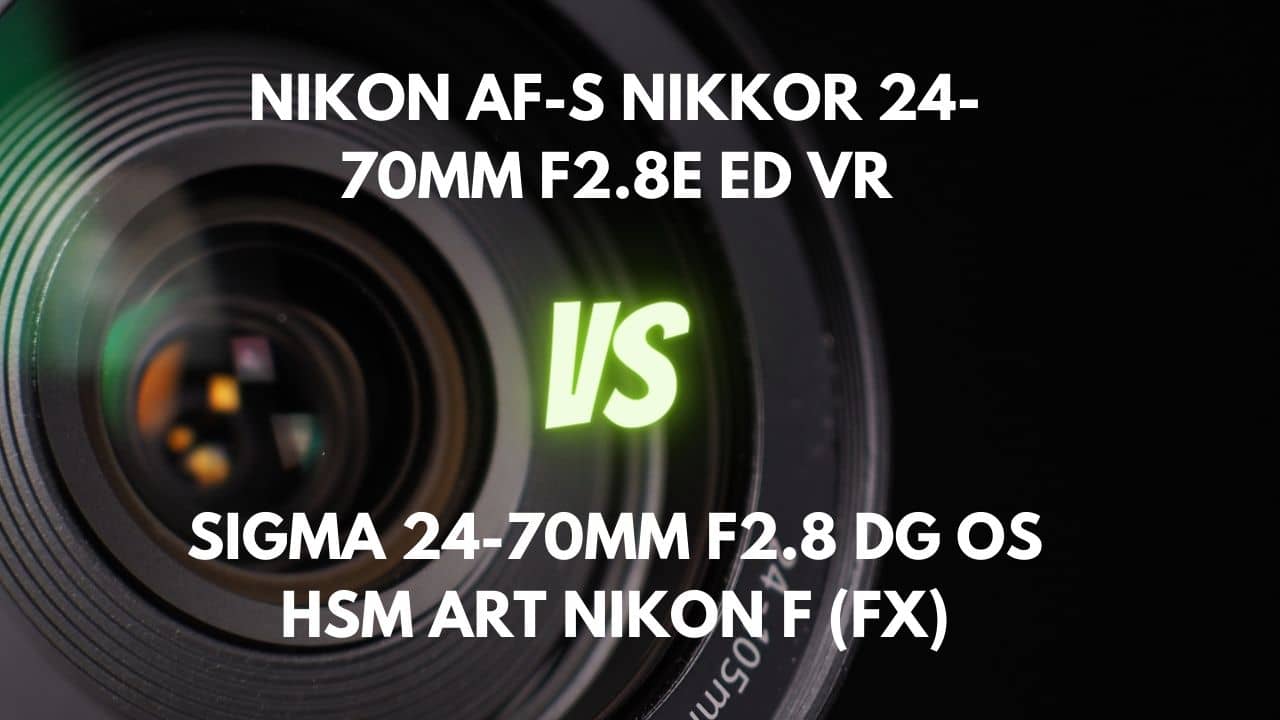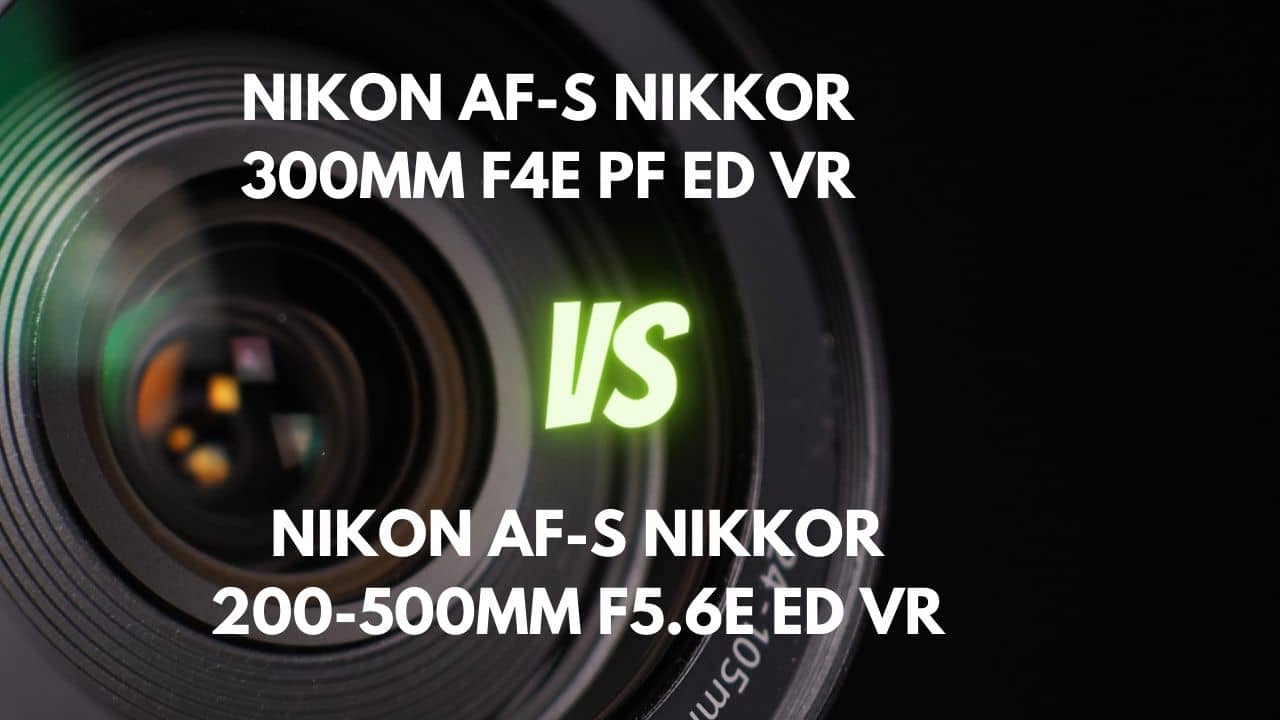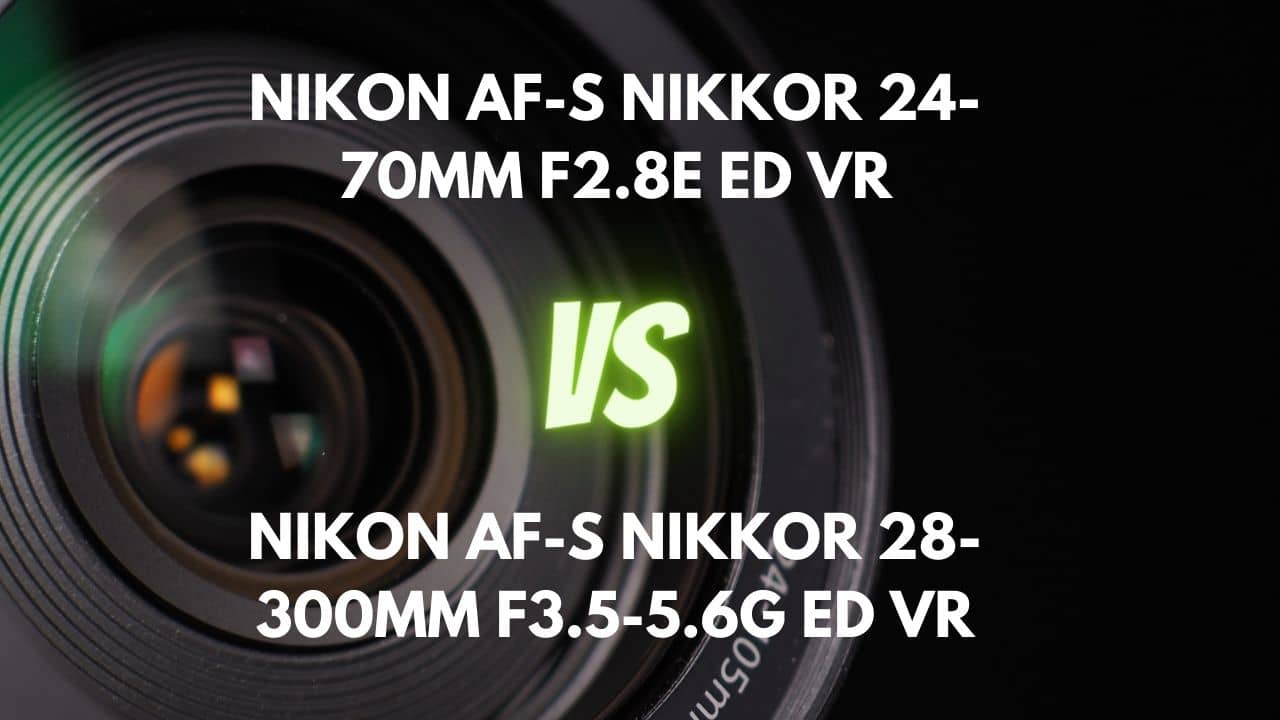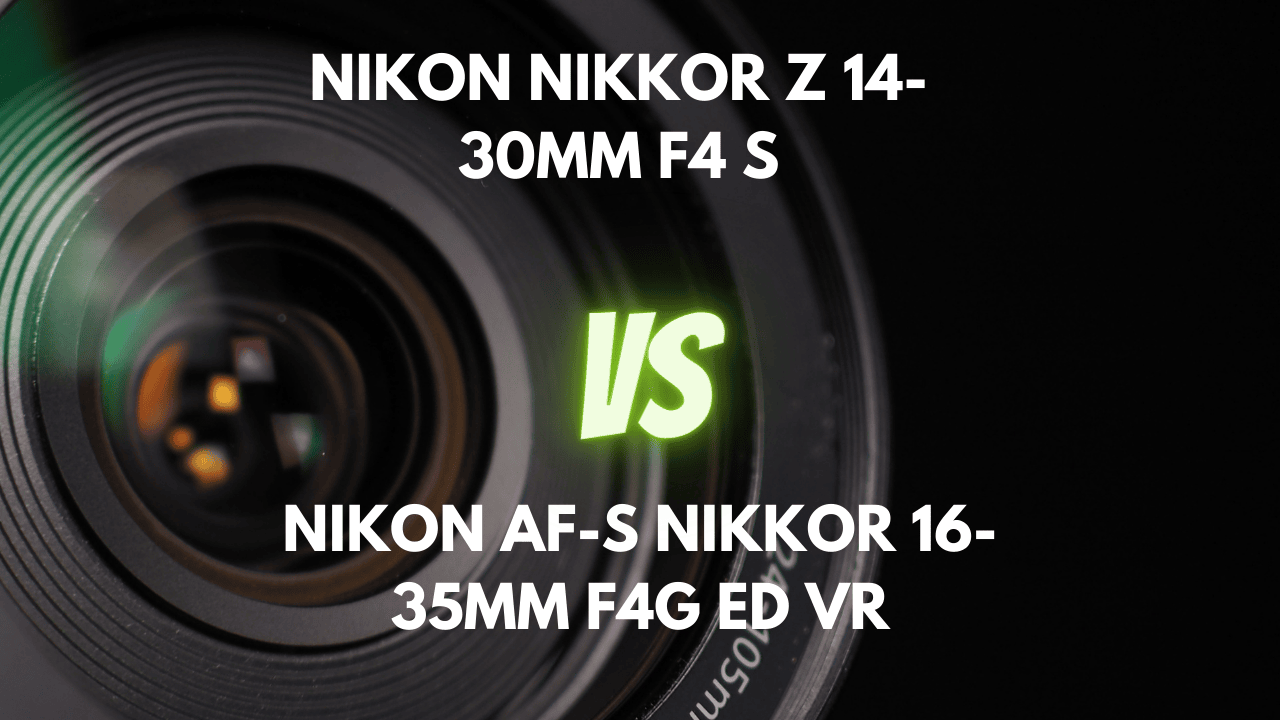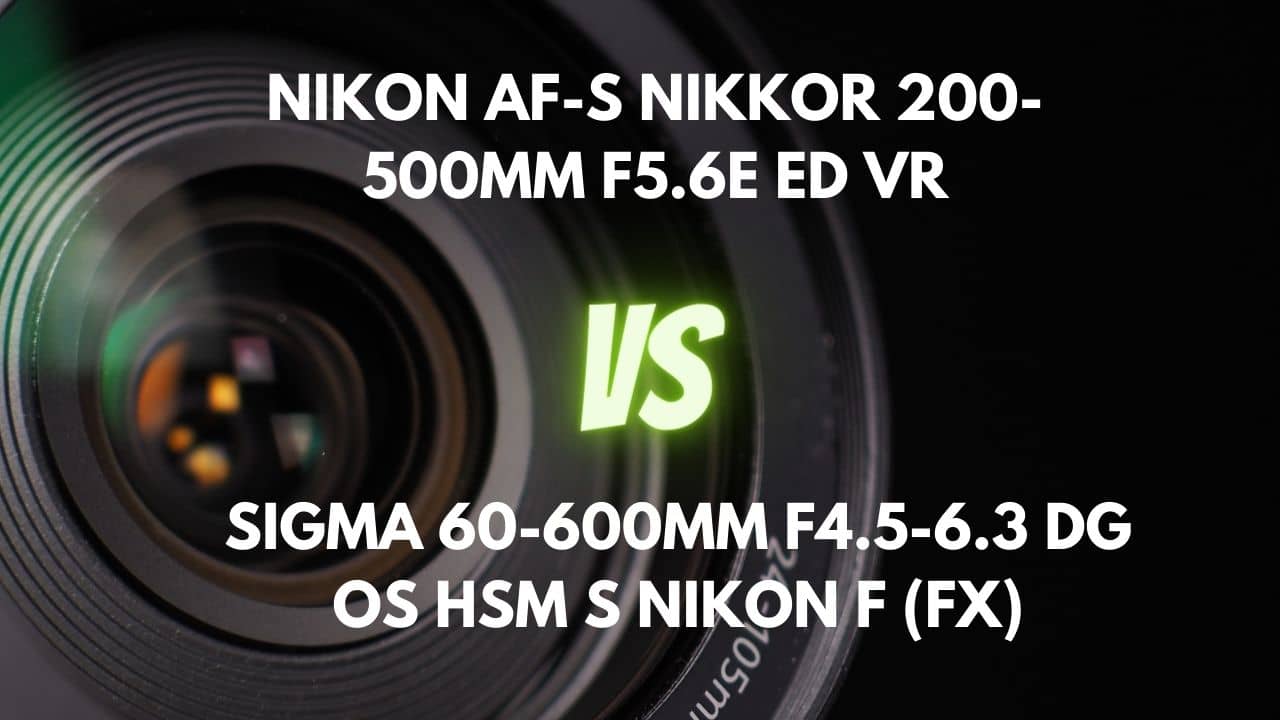Are you on the hunt for the perfect lens to elevate your photography skills and capture stunning images across various scenarios? Look no further!
In this comprehensive comparison, we put two popular Nikon lenses – the versatile Nikon DX 18-105mm f/3.5-5.6 and the extended-range Nikon DX 18-200mm f/3.5-5.6 – head-to-head to help you make an informed decision. Both lenses offer unique benefits, making them excellent choices for different types of photography, from breathtaking landscapes to mesmerizing portraits and everything in between.
As you dive into this article, you’ll discover the key features, performance metrics, and real-world applications of these two lenses, giving you a clear understanding of which one might best suit your photography style and needs.
By comparing aspects like sharpness, bokeh quality, distortion, weather sealing, and more, we aim to provide you with a well-rounded understanding of the strengths and weaknesses of each lens.
So, whether you’re a budding photographer looking to level up your equipment or a seasoned pro seeking a versatile addition to your gear, this comparison is a must-read.
Get ready to uncover the secrets of these two remarkable lenses and ultimately find the one that will help you unleash your full creative potential.
Overview
| Nikon AF-S DX NIKKOR 18-105mm F3.5-5.6G ED VR | Nikon AF-S DX NIKKOR 18-200mm F3.5-5.6G ED VR II | |
|---|---|---|
| Max Aperture | F3.5-5.6 | F3.5-5.6 |
| Aperture Type | Variable | Variable |
| Focal Range (mm) | 18-105 | 18-200 |
| Max Format | APS-C / DX | APS-C / DX |
| Zoom Ratio (X) | 5.8 | 11.1 |
Comparing the Nikon DX 18-105mm f/3.5-5.6 and Nikon DX 18-200mm f/3.5-5.6, both have a variable aperture, with the 18-105mm lens covering a 5.8x zoom ratio and the 18-200mm lens offering a more extensive 11.1x zoom ratio. Both lenses are designed for APS-C / DX format cameras.
The 18-105mm lens is a versatile choice for various photography styles, including landscapes and portraits, with its good low light performance and pleasing depth of field. However, it may not be ideal for tight spaces or when you need a wider field of view.
On the other hand, the Nikon DX 18-200mm f/3.5-5.6 is an excellent option for photographers who require greater flexibility in their compositions, such as travel, events, or wildlife photography. The lens’s larger zoom range allows for better subject isolation and background compression, making it more versatile for different shooting scenarios.
In conclusion, both lenses have their strengths and weaknesses, but the Nikon DX 18-200mm f/3.5-5.6 lens emerges as the superior choice due to its greater versatility and extensive zoom range. However, it’s essential to consider your specific needs and preferences when choosing between these two lenses, as the 18-105mm lens may still be an excellent fit for certain scenarios and photographers.
Design and Ease of Use
| Nikon AF-S DX NIKKOR 18-105mm F3.5-5.6G ED VR | Nikon AF-S DX NIKKOR 18-200mm F3.5-5.6G ED VR II | |
|---|---|---|
| Diameter x Length (mm) | ⌀76×89mm | ⌀77×96.5mm |
| Weight (gr) | 420 | 565 |
| Filter Thread (mm) | 67 | 72 |
| Weather Sealing | No | No |
| Zoom Method | Rotary (extending) | Rotary (extending) |
| Distance Scale | No | Yes |
| DoF Scale | No | No |
| Hood Supplied | Yes | Yes |
| Hood Code | HB-32 | HB-35 |
Comparing the Nikon DX 18-105mm f/3.5-5.6 and Nikon DX 18-200mm f/3.5-5.6 in terms of their physical properties, we can observe some differences.
The 18-105mm lens has a diameter of 76mm and a length of 89mm, while the 18-200mm lens is slightly larger with a diameter of 77mm and a length of 96.5mm. The 18-105mm lens is also lighter, weighing 420 grams, as opposed to the 18-200mm lens, which weighs 565 grams. Both lenses utilize a rotary (extending) zoom method.
The size and weight of a lens are important factors in photography. A smaller and lighter lens is more portable, easier to carry, and less tiring during extended shoots. Additionally, it can offer better balance and handling, making your camera setup feel less front-heavy. Smaller lenses are also more discreet, which is advantageous in situations like street or wildlife photography.
In terms of zoom method, both lenses employ an extending rotary design. While this method is simpler and can result in lower prices and potentially increased durability, it also has its drawbacks. Extending zoom lenses may be more difficult to weather-seal and can affect the camera’s balance during zooming.
Considering the factors above, the 18-105mm lens is more compact and lightweight, making it a better choice for those who prioritize portability and ease of handling. However, the 18-200mm lens offers a broader focal range, which may be more appealing to photographers seeking versatility in their zoom capabilities.
Lens Mount and Barrel
The Nikon DX 18-105mm f/3.5-5.6 lens mount is made of hard plastic, which is lighter and more budget-friendly, but less durable compared to metal. There is no rubber gasket, indicating that it’s not weather-sealed. The lens barrel is predominantly plastic, featuring a textured finish that matches Nikon camera bodies. The industrial polycarbonate used is of high quality, but the lens extends almost 2 extra inches at the 105mm end due to its non-internal zoom action.
On the other hand, the Nikon DX 18-200mm f/3.5-5.6 lens mount is made of metal and has a rubber ring for environmental sealing, protecting against dust and moisture. The lens barrel is made of metal, sporting a smooth finish and a well-designed ergonomic bevel. As the lens is zoomed in or out, the barrel extends or retracts, making it susceptible to zoom creep between 28 and 135mm focal lengths. However, the new version of the lens features a lock switch to prevent zoom creep during transportation.
In conclusion, the choice between these two lenses depends on your priorities as a photographer. The 18-105mm lens is lighter and more budget-friendly due to its plastic construction, but it’s not as durable or weather-sealed. The 18-200mm lens, with its metal construction and weather sealing, offers better durability and protection from the elements, but at the cost of being heavier. If portability and affordability are your main concerns, the 18-105mm lens may be the superior choice. However, if you value durability, weather sealing, and a professional feel, the 18-200mm lens would be the better option.
Weather Sealing
When comparing the weather sealing of the Nikon DX 18-105mm f/3.5-5.6 and 18-200mm lenses, we notice significant differences in their level of protection. The 18-105mm lens is not weather-sealed, lacking any internal seals at the rings, switches, and front of the barrel, as well as a gasket at the lens mount. Additionally, it doesn’t have a fluorine coating on the front element, making it more susceptible to dust, moisture, and light water splashes.
On the other hand, the Nikon DX 18-200mm f/3.5-5.6 offers some degree of environmental sealing through a rubber ring on the metal mount. However, it’s not completely waterproof and lacks internal seals at the rings, switches, and front of the barrel.
In conclusion, the 18-200mm lens provides better weather sealing compared to the 18-105mm lens, although neither of them is fully weather-sealed. If you frequently shoot outdoor or in unpredictable weather conditions, the 18-200mm lens may be the superior choice for its added protection. However, if your photography primarily takes place indoors or in controlled environments, the weather sealing difference may not be a crucial factor in your decision.
Rings
Comparing the rings of the Nikon DX 18-105mm f/3.5-5.6 and 18-200mm lenses, we can see noticeable differences in design and functionality.
The 18-105mm lens features 2 rings: a wide ribbed rubber-textured zoom ring towards the front of the barrel and a thinner focus ring with a ridged rubber coating behind it. The zoom ring offers nice resistance and 80-degree rotation, while the focus ring has a limited 100-degree travel, making manual focus control less precise. Neither ring has ergonomic bevels, but both move smoothly and positively. The lens lacks a windowed distance scale, depth-of-field indicator, and zoom lock.
On the other hand, the Nikon DX 18-200mm f/3.5-5.6 has 2 well-placed rings for ease of use: a zoom ring and a manual focus ring, both featuring a smooth ergonomic bevel. The zoom ring is positioned for easy operation and has an almost half-turn range, while the manual focus ring offers a one-third turn range. A zoom lock switch prevents zoom creep but can be inconvenient to use. This lens also includes a recessed distance scale with settings for various distances and infinity.
In conclusion, the 18-200mm lens offers superior ring design and functionality compared to the 18-105mm lens. The 18-200mm lens provides better ergonomics, smoother rotation, a zoom lock switch, and a distance scale, making it more versatile and user-friendly. If precision, control, and overall usability are crucial factors for your photography needs, the 18-200mm lens is the better choice.
Switches/Buttons
When examining the switches and buttons on the Nikon DX 18-105mm f/3.5-5.6 and 18-200mm lenses, we can see differences in their design and functionality.
The 18-105mm lens has 2 control switches located on its left side, one for toggling autofocus (A or M) and another for enabling or disabling vibration reduction (ON or OFF). The lens doesn’t feature any other switches or buttons.
In contrast, the Nikon DX 18-200mm f/3.5-5.6 comes with 3 slider switches situated on the side of the lens barrel, just behind the focusing ring. These switches allow users to control M/A and M focusing modes, turn VR on and off, and switch between Normal and Active VR settings. The design of the switches and buttons is well-considered and user-friendly.
In conclusion, the 18-200mm lens offers superior switches and buttons compared to the 18-105mm lens. The 18-200mm lens provides more control options, including an additional VR setting, making it more versatile for various shooting situations.
Filter Thread
Comparing the filter threads of the Nikon DX 18-105mm f/3.5-5.6 and 18-200mm lenses, we find that they differ in size and material.
The 18-105mm lens features a 67mm filter thread made of plastic. This filter thread doesn’t rotate during focusing or zooming, making it convenient for using polarizers and ND graduated filters without readjustment.
On the other hand, the Nikon DX 18-200mm f/3.5-5.6 has a larger, 72mm filter thread made of metal. Similar to the 18-105mm, its front element and filter thread don’t rotate during focusing, which is advantageous for angle-critical attachments and filters, such as polarizers and graduated filters.
In conclusion, the 18-200mm lens has a superior filter thread compared to the 18-105mm lens due to its larger size and metal construction. The metal filter thread offers better durability and longevity, while the larger size provides more options for filter availability. However, it’s essential to consider your existing gear and personal preferences when selecting the best filter thread for your needs. If you prioritize a lightweight lens or already own 67mm filters, the 18-105mm lens might be a more suitable choice.
Lens Hood
The Nikon DX 18-105mm f/3.5-5.6 comes with a petal-shaped, plastic hood that attaches via a bayonet mount. Although not flocked on the inside, it effectively shields the front element from oblique sunlight, and it can be reversed for storage.
In contrast, the Nikon DX 18-200mm f/3.5-5.6 includes a plastic hood with a matte finish and a bayonet mount. It features an ergonomic bevel for easy attachment and removal, and the angle of the hood can be smoothly adjusted. The package also contains additional accessories like snap-on front and rear lens caps, a flexible lens pouch, and the lens hood itself.
In conclusion, the 18-200mm lens has a superior lens hood due to its ergonomic design and matte finish, which make it easier to attach and adjust. However, both lens hoods provide adequate protection against unwanted light and can be conveniently stored when reversed. Depending on your needs and preferences, either lens hood could be suitable, but the 18-200mm lens hood has a slight edge in terms of overall design and user experience.
Focusing and Optical Stabilization
| Nikon AF-S DX NIKKOR 18-105mm F3.5-5.6G ED VR | Nikon AF-S DX NIKKOR 18-200mm F3.5-5.6G ED VR II | |
|---|---|---|
| Autofocus | Yes | Yes |
| AF Motor | Silent Wave Motor | Silent Wave Motor |
| Rotating Front Element | Does not rotate on focusing | Does not rotate on focusing |
| Min Focus Distance | 0.45m | 0.5m |
| Max Magnification (X) | 0.2 | 0.22 |
| Full-Time Manual Focus | Yes | Yes |
| Focus Method | Internal | Internal |
Focusing Performance
The Nikon DX 18-105mm f/3.5-5.6 features a Silent Wave Motor drive, ensuring quick and virtually silent autofocus operation. Though not as fast as higher-grade AF-S lenses, it still performs accurately and reasonably quickly.
The manual focus action is easy to operate, and the internally focusing design maintains a constant lens length. Autofocus performance is suitable for most purposes, although it may slow down in low-light situations, especially at the longer end of the zoom.
On the other hand, the Nikon DX 18-200mm f/3.5-5.6 also utilizes a Silent Wave Motor for efficient and nearly silent autofocusing. It takes around 1.2 seconds to go from infinity to 50cm and back again, providing reliable and accurate autofocus in well-lit situations. Low-light performance may be slightly slower but still satisfactory.
The lens offers full-time manual focus override for precise adjustments and maintains a constant length due to its internally focusing design. The front element does not rotate during focusing, making it convenient to use with angle-critical attachments.
In conclusion, both lenses offer solid autofocus performance, with the 18-200mm lens having a slight edge in terms of focusing speed and versatility.
Optical Stabilization
The Nikon DX 18-105mm f/3.5-5.6 features Nikon’s Vibration Reduction (VR) image stabilization system, offering up to 3 stops of stabilization. This system allows for sharp shots at slower shutter speeds and can be toggled via a switch on the lens barrel. With only one stabilization mode and no VR Active mode, it’s still effective and quiet. At 50mm, the lens can be handheld at shutter speeds as slow as 1/8 second, and at 70mm, sharp images are achievable at 1/13 second.
On the other hand, the Nikon DX 18-200mm f/3.5-5.6 boasts Nikon’s second-generation VR II vibration reduction system, claiming to allow handholding at shutter speeds 3.5 stops lower than usual. This near-silent mechanism features two VR modes – Normal and Active. At 18mm, it provides an 80% chance of usable results at 1/6 sec, at 50mm, an 80% chance at 1/13 sec, and at 200mm, an 80% chance at 1/25 sec. Even at slower speeds, you can achieve sharp handheld shots by taking multiple images.
In conclusion, the 18-200mm lens offers superior optical stabilization due to its second-generation VR II system and the additional Active mode. This lens will provide better performance in low-light conditions, handheld shooting, and when capturing video. If optical stabilization is crucial for your photography needs, the 18-200mm lens is the better choice, while the 18-105mm lens still offers adequate stabilization for most situations.
Image Quality
| Nikon AF-S DX NIKKOR 18-105mm F3.5-5.6G ED VR | Nikon AF-S DX NIKKOR 18-200mm F3.5-5.6G ED VR II | |
|---|---|---|
| Special Elements | ED glass element and aspherical lens element | 2x ED glass elements and 3x aspherical lens elements |
| Diaphragm Blades | 7 | 7 |
| Circular Aperture | Yes | Yes |
Aberration
The Nikon DX 18-105mm f/3.5-5.6 exhibits some chromatic aberration, particularly at its widest focal length of 18mm. However, the level of aberration is generally acceptable unless producing very large prints. Aberration is well-controlled across all focal lengths, with aperture choice having minimal impact. The lens borders may experience slight chromatic aberration and light fall-off when used wide open but are quite sharp in the f/5.6-f/11 range.
In contrast, the Nikon DX 18-200mm f/3.5-5.6 also presents some chromatic aberration, with red-green fringing detected at the widest focal lengths. This aberration diminishes at longer focal lengths and is easy to correct. Spherical aberration, however, is evident in the focus shifting required when apertures are stopped down, likely resulting from the extended zoom design.
In conclusion, the 18-105mm lens demonstrates superior aberration control compared to the 18-200mm lens. While both lenses show chromatic aberration, the 18-105mm lens handles it better across different focal lengths and apertures.
Sharpness
The Nikon DX 18-105mm f/3.5-5.6 delivers consistent sharpness throughout the zoom range, exhibiting excellent performance at all focal lengths. Although some chromatic aberration and light fall-off can occur when using a wide open aperture, sharpness quickly improves upon stopping down, reaching peak performance at f/11.
Corner softness can be noticed in certain cases but can be improved by stopping down the lens. The level of sharpness should be acceptable for producing prints, except when the lens is stopped down beyond f/16 at 105mm.
On the other hand, the Nikon DX 18-200mm f/3.5-5.6 showcases impressive sharpness for an F-mount superzoom, particularly at short to mid zoom settings. Center sharpness is generally excellent across the focal range, while corner sharpness may be slightly weaker at wider apertures but improves when stopped down. The sharpest apertures usually range from f/8 to f/11.
At longer focal lengths, such as 135mm and f/5.6, image quality may be visibly impacted, but stopping down to f/11 can yield better results. This lens is capable of producing sharp images, albeit not as sharp as some prime lenses or more specialized zoom lenses. Overall, the lens provides a versatile and convenient zoom range with a good balance of sharpness and image quality.
In conclusion, the 18-105mm lens offers superior sharpness compared to the 18-200mm lens. While both lenses perform well in terms of sharpness, the 18-105mm lens maintains more consistent performance throughout the zoom range and different apertures. If sharpness is a top priority, the 18-105mm lens is the better choice, while the 18-200mm lens still delivers a commendable level of sharpness and versatility for various photography needs.
Bokeh Quality
The Nikon DX 18-105mm f/3.5-5.6 features an iris diaphragm with 7 rounded blades, producing a pleasing rendering of out-of-focus areas and resulting in soft, attractive bokeh. As light diffuses from the center, the bokeh’s shape undergoes transformation, resulting in a captivating blur around the subject. Towards the edges, the bokeh assumes a distinct cat’s eye pattern. Overall, the efforts to create pleasing out-of-focus areas with this lens have been largely successful.
In contrast, the Nikon DX 18-200mm f/3.5-5.6 can deliver smoothly blurred out-of-focus regions, particularly at 200mm f/5.6, but the bokeh is not entirely smooth. Hard-edged specular highlights can give a harsh appearance to defocused areas. However, with careful selection of the background and thoughtful composition, it is possible to achieve appealing results. Some users have reported distracting and nervous bokeh with this lens, which may require additional post-processing to smooth out.
In conclusion, the 18-105mm lens offers superior bokeh quality compared to the 18-200mm lens. If bokeh quality is a consideration for your photography needs, the 18-105mm lens would be the better choice. However, the 18-200mm lens still provides decent bokeh quality with careful composition and background selection.
Flare/Ghosting
The Nikon DX 18-105mm f/3.5-5.6 demonstrates impressive resistance to flare and ghosting, even when capturing light sources within the frame. However, it’s important to note that this lens is sensitive to backlight, which may lead to ghosting and flare in certain situations. To mitigate these effects, a petal-shaped lens hood is provided, effectively shielding the front element from unwanted light outside of the image frame.
On the other hand, the Nikon DX 18-200mm f/3.5-5.6 exhibits minimal flare and ghosting as long as it isn’t pointed directly into the sun. When subjected to flare, it produces starbursts, rainbow effects, and circular patterns of various colors, as seen in the sample images section. Nonetheless, contrast is not significantly affected. This lens handles flare relatively well, especially when compared to other lenses in its class. Its complex optical construction allows for intricate flare patterns at small apertures.
In conclusion, both lenses perform admirably in terms of flare and ghosting resistance. The 18-105mm lens offers slightly better flare resistance with its petal-shaped lens hood, while the 18-200mm lens handles flare well and produces interesting flare patterns.
Vignetting
In the Nikon DX 18-105mm f/3.5-5.6 lens, noticeable vignetting can be observed, especially at wider apertures and focal lengths. At 18mm and f/3.5, the corners of the image are approximately 1.85 stops darker than the center. Similarly, at 105mm and f/5.6, the corners are about 2.47 stops darker.
However, vignetting can be easily corrected by stopping down to f/11, resulting in visually uniform illumination across the image. Some users may not find vignetting a serious issue, especially when using a camera body with built-in vignetting control.
On the other hand, the Nikon DX 18-200mm f/3.5-5.6 shows occasional vignetting, primarily at wider focal lengths. Compared to its competition, this lens demonstrates better optical performance in terms of vignetting correction, indicating a good starting point for post-processing. Vignetting can be effectively reduced through software or in-camera correction, but it’s preferable for the lens to produce satisfactory results without digital manipulation.
In conclusion, the 18-105mm lens experiences more noticeable vignetting, but it can be easily corrected by stopping down the aperture. The 18-200mm lens shows less vignetting and performs better in terms of optical correction.
Distortion
The Nikon DX 18-105mm f/3.5-5.6 displays some form of distortion at nearly all focal lengths. When set to its widest point of 18mm, the Nikon DX 18-105mm f/3.5-5.6 lens displays visible barrel distortion. This distortion can be corrected using post-processing software. As the focal length increases beyond 24mm, a complex distortion pattern emerges. The edges of the image exhibit pincushion distortion, while the center shows barrel distortion, resulting in a distinctive “moustache” effect.
At 35-50mm focal lengths, the distortion is less pronounced, but no focal length setting results in a distortion-free image. Correcting distortion can be a difficult task, due to the non-linear and intricate nature of its distortion profile. This makes it challenging to correct the distortion either in-camera or in post-processing software.
In comparison, the Nikon DX 18-200mm f/3.5-5.6 exhibits noticeable distortion, particularly at the wide-angle end, with prominent barrel distortion resulting in a “mustache” or wavy distortion pattern that may be difficult to correct using simple software tools.
Pincushion distortion becomes more evident between 35mm and 70mm but is less complex and can be more easily corrected with software. Distortion is mostly an issue in photos with straight lines and may not be a significant problem for subjects like landscapes, portraits, or wildlife.
In conclusion, both lenses exhibit distortion, with the 18-105mm lens having more complex and challenging-to-correct distortion patterns. The 18-200mm lens performs better in terms of simpler distortion patterns and easier software correction. If managing distortion is a priority, the 18-200mm lens would be the superior choice, but it’s essential to remember that distortion may not significantly impact various photographic subjects.
Final Verdict
The Nikon DX 18-105mm f/3.5-5.6 excels in terms of aberration control, sharpness, bokeh quality, and flare resistance, while being more compact, lightweight, and budget-friendly.
On the other hand, the Nikon DX 18-200mm f/3.5-5.6 offers greater versatility with its extensive zoom range, better weather sealing, superior ring design and functionality, enhanced optical stabilization, and more manageable distortion.
Given the various factors, the 18-200mm lens emerges as the superior choice due to its broader focal range and added features, making it a more versatile and user-friendly option for photographers.
However, it’s essential to consider your specific needs and preferences, as the 18-105mm lens may still be an excellent fit for certain scenarios and photographers who prioritize portability, sharpness, and bokeh quality.

